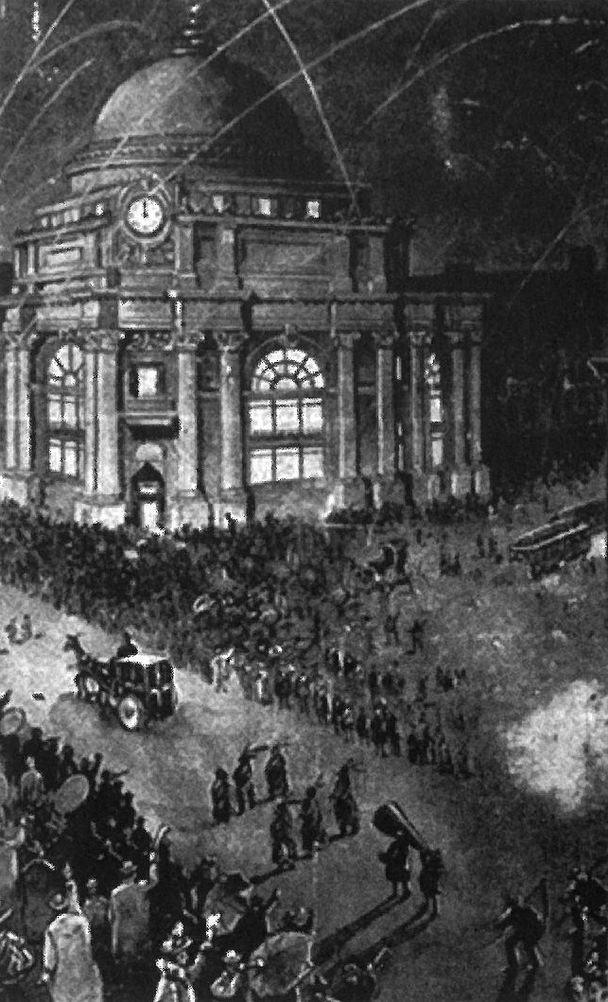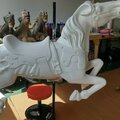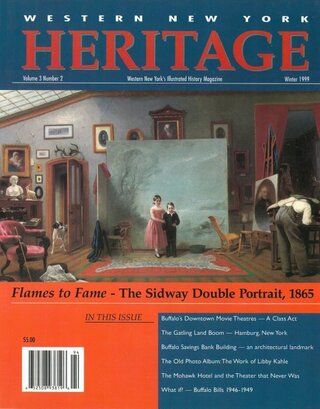There seems to be some discussion about when we should celebrate the Millennium. Is it January 1, 2000 or 2001? Fortunately or unfortunately, there is enough wiggle room in variant definitions of what we should be celebrating, so that there is a case for either date. Discarding the extraneous definitions, a millennium celebrates the passage of a thousand years or the one-thousandth anniversary of an event. That gives us the choice of celebrating January 1st 2000 as the one-thousandth year anniversary of the first day of 1000, or January 1, 2001 as the passage of one thousand years since the last millennium celebration. How do we know exactly when the last millennium was celebrated? Well we don’t. If nothing else, calendar reform makes that type of calculation close to impossible, so let’s look back at the last “turn of the century.”
At the beginning of 1900, Buffalo did have a few modest celebrations. In preparation for the new year, Mrs. Clayton Bryant of Delaware Avenue gave a school boys’ and school girls’ party on Wednesday. The Flint & Kent Company decorated the 20th Century Club with Norwegian spruce layered from the rafters, The newspapers for January 1, 1900 report nothing except the run of the mill New Year’s parties. One might imagine that a “special” celebration or two might be held if it were the dawn of a new century instead of the beginning of just another year. But the biggest news in the “Sporting Outlook for 1900” was that over 250 new golf courses had been laid out in 1899 and the national amateur championship would be held in Buffalo. Perhaps the most unusual item was a notice that pictures of six thousand people, taken at Christmas Eve theater performances, would be published on January 7th. “Flashlight” photography was a novel idea, but not one that produced a highly useable image.
The most interesting newspaper material announcing “New Year 1900” was a Rafael Beck drawing of Father Time, not a turn of the century Father Time, but just an ordinary Father Time, and ordinary Baby New Year, in the Buffalo Courier. Beck, who lived from 1858 to 1947, was one of Western New York’s most productive artists, internationally recognized in such varied mediums as watercolor, stained glass and large murals, and he was the official artist of the Pan-American Exposition.
In a simpler time, predating the phenomenon of the Hallmark Holiday, even the combination of Buffalo’s 100th birthday and the turn of the century did not produce a complex affair. In fact plans were so straightforward that Mayor Conrad Diehl waited until December 24, 1900 to request a committee be formed by the Council to plan the celebration. Diehl was one of Buffalo’s better mayors and a hometown boy who knew his constituency well. He was in the midst of planning the Pan-American Exposition and was familiar with all the key elements for a big-time celebration.
By sunset on December 31, $700 had been raised, and all was in order. Five fireworks displays were planned and every group and marching band that could had signed up for a parade up Main Street to Virginia. City Hall would be lit by 1500 gas lamps, the new Buffalo Savings Bank at Main and Genessee would be illuminated for the first time, and every horn, steam whistle and voice would be raised in the loudest noise ever heard in the city. The only problem would be a snowstorm. And that’s the way it happened, including the snow. The snow kept the musicians home, but the mayor more than made up for that by blowing his own horn.
On December 29, in City Hall, the mayor had been presented with a thirteen-foot horn donated by Roche’s Tin Shop. Diehl was delighted with the inscription that read “To Mayor Diehl, Twentieth Century Tinhorn” and blew it loudly whenever he could. The Courier ran an engraving of the parade, which drew 100,000 spectators. It shows the fireworks over the Buffalo Savings Bank and in the foreground, the Sprudel’s Fishing Club, with the mayor’s tin horn. The fireworks went a bit over budget at $600, it cost $25 to light City Hall for two hours, the police needed some overtime, and a few gifts were handed out, but it was such a success that the Council had no problem making up a little deficit spending. Congratulations poured in from cities across the country, and everyone had a grand party on January 1st 1901. Actually, there might still be those who would wish to usher in the millennium with a simple celebration that could be put together in one week, for $700.










